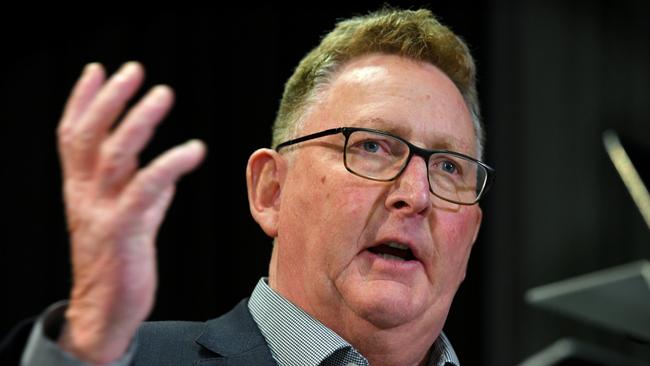New Zealand went earlier and faster on curbing inflation
Our Reserve Bank could learn some lessons from our colleagues across the ditch when it comes to taming inflation.

Business
Don't miss out on the headlines from Business. Followed categories will be added to My News.
Despite our Reserve Bank’s discussion of a rate rise at its last meeting two weeks ago, its policy position remains one of “softish” neutrality.
Governor Michele Bullock continues to not rule anything “in or out”.
Except, self-evidently, she and the board did “rule out” a rate hike at that last meeting.
The RBA’s “softish neutrality” was put into the sharpest possible relief by the decision on Wednesday by its counterpart across the Tasman to also leave its policy rate unchanged.
For whereas our RBA left its unchanged at 4.35 per cent, RBNZ’s was a significantly higher 5.5 per cent.
This, despite broadly similar economic conditions in the two countries.
NZ last reported 4 per cent annual inflation, Australia 3.6 per cent. But with inflation in the latest (March) quarter itself in NZ only 0.6 per cent as against 1 per cent in Australia.
The latest NZ jobless rate was 4.3 per cent, Australia was 4.1 per cent. But with both clearly headed higher.
The big – comparative – question is not so much whether the two inflation numbers are headed lower, but how quickly.
As I’ve explained, NZ led Australia – and indeed the world – in lifting interest rates into the rising tide of inflation coming out of Covid.
It first hiked much earlier – in October 2021. Our RBA took until May 2022, seven months later.
RBNZ hiked more aggressively. It’s had seven
50-pointers and even one
75-pointer. Our RBA just four 50-pointers, then settling back to 25-pointers, and pauses.
And, as noted, RBNZ took its rate much higher.
The proof of the pudding, so to speak, of the two policy approaches will emerge over the next six to 12 months.
In his statement on Wednesday, RBNZ governor Adrian Orr said inflation was expected to be back within target “by the end of 2024”.
Contrast that with our RBA’s statement from the May meeting minutes, that the board had “limited tolerance” for inflation getting back within target “later than 2026”.
Hmm.
Both central banks have the same upper limit to their inflation target. NZ’s is 1-3 per cent, Australia’s 2-3 per cent.
So, we have RBNZ predicting NZ’s inflation will be below 3 per cent by the end of this year.
While the RBA says it “tolerates” it taking until 2026 to get there. It actually predicts it will get there by the end of 2025.
There is no way this can be dressed up as a hawkish or even semi-hawkish stance. This is May 2024; the RBA is prepared for it to take another 19 months until the end of 2025. Hopefully.
This is of course the “narrow path”, initiated by Bullock’s predecessor Philip Lowe and continued by her.
Abjuring NZ-style “hit inflation hard”, to try to minimise inevitable job losses.
We thus have a real-time policy comparison, separated by just 2200km.
And not just which proves more effective with inflation.
But could our RBA’s “slowly slowly” approach – true, with an awful, and I mean Awful with a capital “A”, lot of “help” from the Albanese government – actually cause more and longer jobless pain?
The very opposite of what Lowe/Bullock hope?
Originally published as New Zealand went earlier and faster on curbing inflation



